5
HATHOR OF THE PLEIADES
People do not like to think. If one thinks, one must reach conclusions. Conclusions are not always pleasant.
HELEN KELLER
THE CULT OF HATHOR predates the historical period in Egypt and is so ancient that its beginnings date back to predynastic, matriarchal times in ancient Egypt. The worship of Hathor has been a staple of Egyptian history since its beginnings, and there were more festivals in her honor than in the honor of all other deities. Seen as a cosmic goddess who came from the sky and accompanied the sun god Ra as a “dweller in his disk”1 she was known as his female counterpart and the “mother of light,” responsible for one of the first acts of creation.
Hathor became associated with fertility and procreation and was sometimes depicted as a white cow feeding all the other gods with her divine milk. Other representations of Hathor show her and the goddess Nuit holding up the Milky Way, with their legs placed on calculated celestial alignments, equinoxes, and solstices, corresponding to landmarks in Egypt. Hathor’s face has been depicted artistically as a uterus, with her horns resembling fallopian tubes, similar to the headpiece Madonna wore during the 2012 Super Bowl halftime show in Indianapolis. In a way these kinds of artistic representations showcase an archaic understanding of ancient matriarchal symbolism, now overlooked in modern history with its emphasis on patriarchal rule.
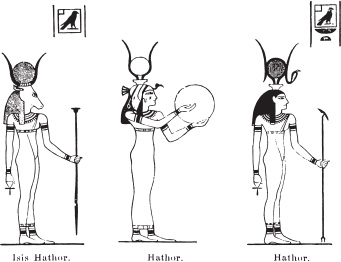
Figure 5.1. Line drawings of the Egyptian god Hathor. From Karl Baedeker, Handbook for Traveling: Lower Egypt, with the Fayum and the Peninsula of Sinai, part 1, 1885.
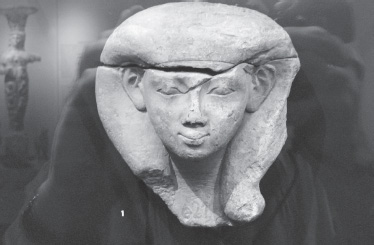
Figure 5.2. Hathor. Museum Carnuntinum, lower Austria. Head of the Egyptian goddess Hathor (3rd century). Courtesy of Wolfgang Sauber.
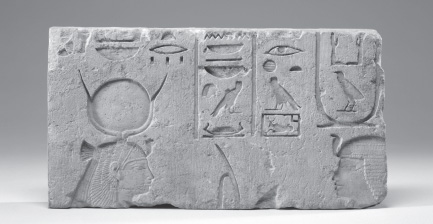
Figure 5.3. This rare bas-relief shows King Necho II, right, facing the cow-goddess Hathor, who wears a vulture headdress topped by a sun disk and cow horns. The inscription above the goddess may once have read, “I grant you every country in submission.” Courtesy of Walters Art Museum, Baltimore, Maryland.
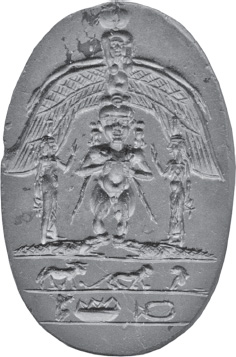
Figure 5.4. Depicted above the god is a head of Hathor with a winged sun disk. Gems with magical icons and words were believed to be protective. Courtesy of Walters Art Museum, Baltimore, Maryland.
In the lore of the Seven Hathors or, as the Greeks called it, the Seven Fates, Hathor guides her celestial herd—a group of seven stars in the Taurus constellation known as the Pleiades. Also known as the Seven Sisters, the Pleiades are the closest array of stars visible to the naked eye (see plate 11). Since the Egyptians were keen observers of the heavens, it stands to reason that they mythologized Hathor’s celestial homeland. The Pleiades comprise a strange star system that continues to fascinate humankind. Curiously, NASA’s “flagship” supercomputer—capable of calculating in sixty seconds what would take over a year to compute if everyone on the planet did one calculation per second, for eight hours a day—is named after them.2 A mind can only begin to fathom the meaning behind the code word of NASA’s pride and joy. If Hathor and her companion, the sun god Ra, descended from the Pleiades, it makes sense that when they cruised on their solar boat or spacious disk that this ‘“disk” was meant to represent a spaceship and not the actual Sun. Because if they were indeed only talking about the Sun, then what would be the reason for Hathor to make such a ruckus while morphing into a hawkish hybrid, capable of flight?
The distinguished Egyptologist and director general of excavations and antiquities for the Egyptian government Gaston Maspero of Paris spent decades researching, cataloguing, and writing about ancient Egypt and Asia. His voluminous series on the ancient world’s history provides some of the best and most credible information available on the tangled history of predynastic Egypt. He describes Hathor’s colorful visit from heaven in such a way that if Maspero would have been privy to our understanding of the ancient astronaut theory he would have stopped dead in his tracks after writing, “. . . in the form of a human-headed sparrow-hawk of lapis-lazuli, accompanied by her divine cycle to come and unite herself to the statue,”3 in describing Hathor’s return to Earth.
A verse from the Papyrus of Nebseni describes a longing for the goddess Hathor, who has recently flown off in her spaceship toward Heliopolis:
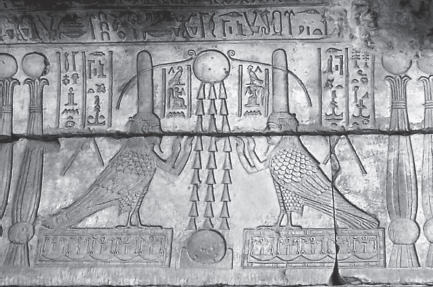
Figure 5.5. Bas-relief of Hathor taking off in her ship. Dendera Hathor temple complex. Courtesy of Csorfoly Daniel.
In a clean place shall I sit on the ground beneath the foliage of the date-palm of the goddess Hathor, who dwelleth in the spacious Disk as it advanceth to Annu (Heliopolis), having the books of the divine words of the writings of the god Thoth.4
The Temple of Hathor at Dendera was the central location of the cult of Hathor and houses many curious features that have been covered up for centuries. There is even an older temple beneath the present one that stretches into a maze of underground crypts and vaults. Curiously, these deep underground crypts contain no soot marks, which would have indicated the presence of fire torches—the only means of illumination that would have been available at that point in history, according to the time line elite Egyptology has established. What light source were these ancients able to use while constructing the elaborate hieroglyphs and the famous round Dendera zodiac? (See plate 12.) Is it possible that these engineers didn’t need light to carry out their work? Unfortunately, the zodiac found on the ceiling in a small room on the second floor of Hathor’s main temple is a replica commissioned by Napoleon after he invaded Egypt and hauled the original one back to France, where it resides permanently at the Louvre Museum in Paris. The present zodiac replica has been damaged to the point that it is barely recognizable. This zodiac and the accompanying walls of astonishing hieroglyphs have left archaeologists baffled for over a century as to what they mean. In later chapters we will discuss in greater detail the other mysterious frescoes that adorn Hathor’s temple.
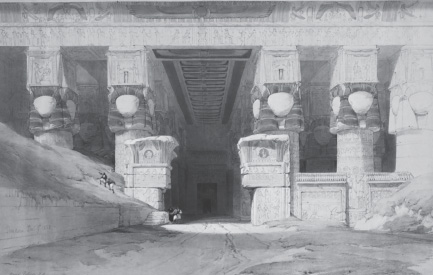
Figure 5.6. Temple of Dendera. From David Roberts, Egypt & Nubia, From drawings made on the spot by David Roberts and lithographed by Louis Haghe, vol. 1, part 36, 1846–1849.
Scenes depicted on the walls of Hathor’s temple span a range of fields, including biology, unknown technology, cloning, astronomy, astrology, planetary systems, and large cycles of time. If the Seven Hathors represented the Pleiades, as evidence appears to indicate, it means the initiates had knowledge beyond our galaxy, again pointing to interstellar travel and exchange of knowledge with alien beings. Interestingly, this knowledge would surface again during the Amarna period—one of the most important ages in humanity.
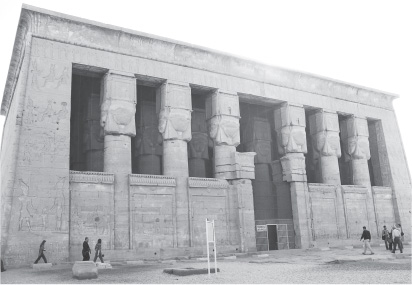
Figure 5.7. Hathor Temple complex entrance. Courtesy of Csorfoly Daniel.
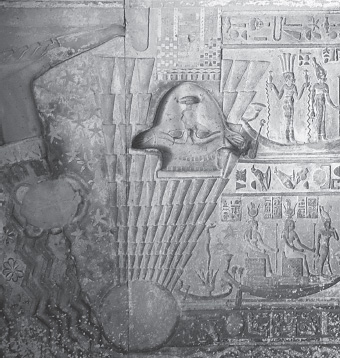
Figure 5.8. The ceiling of the pronaos of the Dendera Temple; a UFO can be seen flying through sky in this bas-relief. Courtesy of LassiHu.
During the Amarna period, the arts and sciences flourished to a point we have yet to reach. We can’t even understand how such heightened talents were possible. This magnificent leap in cultural evolution happened at a time when a mysterious race known as the Shemsu Hor was operating behind the scenes of the Egyptian priesthood. Who were the Shemsu Hor? The truth of what really happened during this fateful era of humanity has been debated, been pondered, and driven people mad ever since. We will see that Pharaoh Akhenaten and his bloodline represented the last stand of a truly free humanity with widespread access to a sacred and ancient knowledge taught by and handed down from an advanced, interstellar race far back in antiquity. The battle to possess this information would turn out to be an epic confrontation between good and evil with repercussions still felt today.